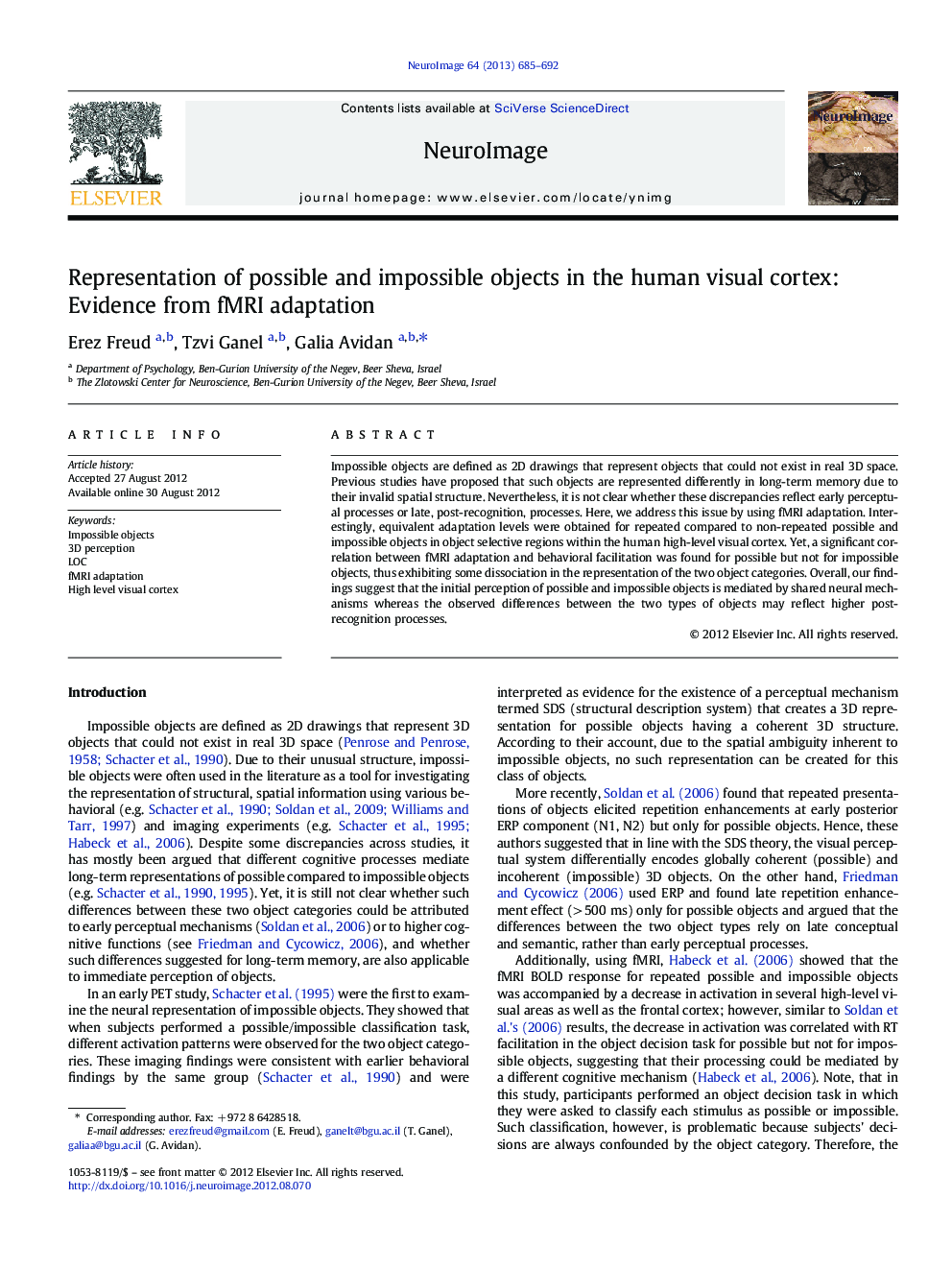| Article ID | Journal | Published Year | Pages | File Type |
|---|---|---|---|---|
| 6031051 | NeuroImage | 2013 | 8 Pages |
Impossible objects are defined as 2D drawings that represent objects that could not exist in real 3D space. Previous studies have proposed that such objects are represented differently in long-term memory due to their invalid spatial structure. Nevertheless, it is not clear whether these discrepancies reflect early perceptual processes or late, post-recognition, processes. Here, we address this issue by using fMRI adaptation. Interestingly, equivalent adaptation levels were obtained for repeated compared to non-repeated possible and impossible objects in object selective regions within the human high-level visual cortex. Yet, a significant correlation between fMRI adaptation and behavioral facilitation was found for possible but not for impossible objects, thus exhibiting some dissociation in the representation of the two object categories. Overall, our findings suggest that the initial perception of possible and impossible objects is mediated by shared neural mechanisms whereas the observed differences between the two types of objects may reflect higher post-recognition processes.
⺠Possible and impossible objects elicit similar adaptation in high-level visual areas. ⺠Adaptation for possible objects is correlated with behavioral (RT) facilitation. ⺠Adaptation level for impossible objects is not correlated with RT facilitation. ⺠Possible and impossible objects have similar representation in object-related areas. ⺠Differences between these object categories emerge from late cognitive processes.
